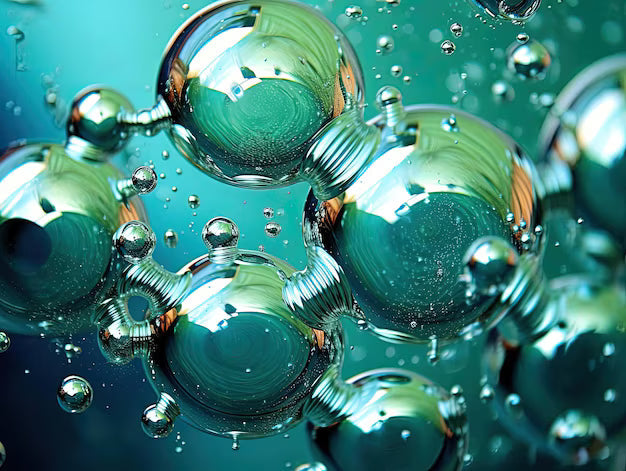EVOO and Pain Modulation - Blog #8

Hello Everyone! Happy Friday and welcome back to my blog. I hope by now you guys are feeling amazing with the wonderful effects of EVOO on your body!! I know Charles and I are.
I’d like to share a comment from M.W. “I am 85, and have had a history of high LDL (bad cholesterol) and third stage kidney disease. So in May I began a regimen of 2 Tbsp high polyphenol olive oil mixed with 2 tsp fresh lemon juice every morning before breakfast. Not only has my LDL gone down from 142 to 87, but my Glomerular Filtration Rate (GFR) has gone up from 41 to 52. I hope my GFR will continue to go up since it needs to be 60-70 for my age. I’m so thankful to have found some information here that is easy to understand and has proven to be so helpful to me.”
Great M.W!! Keep it up! When you get bloodwork done again, hopefully that GFR will be significantly higher!
This week we’re investigating pain and what EVOO can do to modulate it. Let’s get started.
Pain is perceiving a stimuli in a negative or unpleasant way, with localized sensation in a particular body part with varying degrees of severity. Pain can be acute or chronic and can dramatically affect some people, resulting in short-term or long-term disability. When someone perceives terrible pain, their behavior changes. They will do nearly anything to make it stop or relieve it. This is a real problem and has led to the opioid epidemic facing our nation today. Let’s break down the cascade of events that results in the sensation of pain.
First, we have nerve endings in most body tissue that have receptors who’s job is to respond to tissue damage or noxious (potentially damaging) stimuli. Second, the messages initiated are then sent by nerves to the spinal cord. The nerve endings together with the nerve sending signals to the spinal cord are termed the primary afferent nociceptor (PAN). The PAN contacts the second-order pain-transmission neurons found in the spinal cord. These cells then relay the messages to higher centers, including the brain stem reticular formation, somatosensory cortex, limbic system and thalamus. “It is thought that the processes underlying pain perception involve primarily the thalamus and cortex.” For obvious reasons, most experiments on pain involve animals, rather than people, and typically only addresses acute pain. Researchers also are limited to studying more superficial (cutaneous/skin) injury vs deep tissue pain (musculoskeletal/joint, visceral/organ), which involve clinical syndromes of chronic pain.
There are 4 major components involved in processing pain in the brain stem.
1. Transduction - tissue-damaging stimuli activate nerve endings (pinch, pressure, heat, chemical: many of these produce an inflammatory response)
2. Transmission - the relay function by which messages are carried to the areas of the brain involved in perception of pain
3. Modulation - this is a recently discovered neural process that acts to specifically reduce activity in the transmission system
4. Perception - subjective awareness, including attention, expectation and interpretation of pain
Okay. This is a very simplified version of what is going on. There are multiple things happening all at once. Scientists are also studying the phenomenon of pain without activity in the PAN, and there can be activity without pain. Think about someone with an amputated limb. How can they still feel their leg (phantom limb)? This is very difficult to study. Patients disabled with low back pain (for example) find it difficult to pinpoint, since the nerves innervating these tissues are deep and not near the skin. Often times, pain can be referred from the origin of damage to another area in the body. An example of this is heart attack. Some people don’t experience chest pain, but back, left arm and upper abdominal pain. In typical western medicine, understanding mechanisms of referred pain is poorly understood. [However, in Chinese (eastern) medicine, meridians in the body are used to treat pain syndromes. This is the basis for acupuncture, dry needling and acupressure. There are 12 standard meridians, divided into Yin and Yang categories. The Yin include lung, heart, spleen, liver, kidney and pericardium. The Yang include the small and large intestine, triple burner (fight/flight/freeze response) impacting immune system and stress management, stomach, bladder and gallbladder.]

Physiological mechanisms of referred pain have been proposed. They include:
1. Sympathetic nerves release substances that sensitize primary afferent nerve endings in the region of referred pain, or possibly restrict blood flow in the vessels nourishing the nerve.
2. Peripheral branching of a nerve to separate parts of the body causes misinterpretation of messages
3. The convergence-projection hypothesis: convergence of visceral and somatic sensory inputs onto pain projection neurons in the spinal cord may interpret messages as coming from skin and muscle rather than an organ.
4. The background activity (resting) of pain-projection neurons in the spinal cord that receive input from one somatic region is amplified in the spinal cord by activity originating in another region of the body. (ex: trigger point)
This can be a real problem for patients as well as physicians. Cancer, for example, can literally hide out due to pain presenting somewhere else in the body. In humans, studies show the spinothalamic tract is a major pathway for pain. There is a direct (lateral spinothalamic) pathway, and an indirect (medial spinoreticulothalamic) pathway. It is thought that the direct pathway is involved in sharp, well-localized pain, while the indirect is involved with deep somatic and visceral pain. Pain tolerance is very complex and involves previous experience, attitudes, economic and gender factors, personality traits and circumstances under which the pain is experienced. For example, most of us would not go to the doctor for a headache. However, if you had a close family member die of brain cancer and you suddenly experienced a headache, you probably would get it checked out.
Let’s discuss pain modulation (suppression). Scientists discovered that using electrical stimulation in certain areas of the brain blocks responses to noxious (harmful or unpleasant) stimuli in lab animals. This led to trials with humans suffering from chronic pain, providing relief. This is termed stimulation-produced analgesia (SPA). This phenomenon is mediated by a discrete neuronal network running from the midbrain to the medulla and then descending to regions of the spinal cord containing pain-transmission neurons. This pathway is also activated with morphine and other opiate analgesics. Now, your brain contains substances that have the same pharmacological properties as plant-derived and synthetic opiates. They are found in nerve cells in both the CNS (central nervous system) and PNS (peripheral nervous system) and are in high concentrations in brain stem sites implicated in pain suppression. This system is activated after surgery. Failure of this system is strongly implicated in chronic pain conditions. It is also of note that “tissue damage initiates a variety of processes that sustain and amplify pain.” However, repeated stimuli reduces the threshold of the PAN, so what normally wouldn’t hurt becomes hypersensitive (super sensitive). A friendly slap on the back or taking a hot shower may be perceived as too painful following a sunburn for example. Sometimes patients with relatively minor injuries begin to develop pain disproportionate to their injury. Reflex Sympathetic Dystrophy is an example of hyperactivity of the sympathetic nervous system. These patients need to dampen their pain by gently stroking, rubbing the affected area to desensitize (calm down) the activity of the sympathetic nervous system. If this doesn’t work, sympathetic nerve blocks can be used. This is what’s behind rubbing a part of your body that you hurt, or kiss your kids ouchies to make it better!
Neuropathic pain, such as neuropathy, is damage to the CNS or PNS that can produce chronic pain. Onset can be several days to weeks following the injury and tends to worsen before stabilizing. Diabetes mellitis (type 2) and alcohol toxicity are diseases that produce sensory abnormalities such as hyper-reactivity to ordinarily innocuous stimuli, or even deficits in pain sensation. Omega 3 FAs “provide some relief” in neuropathic pain syndromes, particularly diabetic peripheral neuropathy after a 3 week administration. The mechanisms are poorly understood.
Okay! Once again, there’s a lot going on here. Our bodies are very complex. Recently, there is a growing body of research examining the role of FFAs (free-fatty acids) on pain modulation. It has been widely demonstrated that Omega 3 (an essential fatty acid we have to take in) is very beneficial in brain development and neuronal protection, preventing myelin and peripheral nerve degeneration following low-dose radiation exposure. Omega 6 PUFAs are known inflammatory enhancers, therefore tend to exacerbate pain. Consequently the focus on relieving pain is on Omega 3 (Fish oil) and Omega 9 FAs (Oleic Acid). Let’s take a look at what Oleic Acid (OA) can do to modulate pain. Studies demonstrate that dietary intake of OA is associated with reduction in anger and irritability, reduce inflammatory arthritis and increase myelin basic protein levels. OA also has a greater affinity (attraction) for a receptor responsible for neuronal differentiation (specialization) than other FFAs, mediates anti-inflammatory effects by inhibition of ROS (reactive oxygen species) that cause a lot of damage (free radicals). Modulation of glia (CNS neurons) OA inhibits the permeability of gap junctions in astrocytes, while Omega 3 increases permeability. Recent evidence in electrophysiological studies indicate that these channels have a higher open probability in pathological (disease) conditions and a lower open probability in normal physiological conditions. “Exacerbated hemichannel opening occurs in metabolically inhibited cells, including cortical astrocytes, which contributes to the loss of chemical gradients across the plasm membrane and speed cell death.” OA can combine with dopamine to act as an agonist (helper) to facilitate locomotion (important in Parkinson’s disease) and descending anti-nociception of noxious reflex activity. Scientists also found increased serotonin innervation within the dorsal and ventral horn, compared to uninjured tissue. During development, OA has neuro-active properties by complementing Albumin (protein) to facilitate neuronal and dendritic growth as well as “promotes recovery of hindlimb (in mice) motor function and reduces spasticity following spinal cord injury, in addition to promoting antinociception and anxiolytic effects following both central and peripheral nerve injury.” OA is known to modulate arthritic pain (and anxiety) by desensitizing receptor channels within the dorsal root ganglia to noxious (pain-producing) stimuli. The mechanisms of action of OA suggest an analgesic (relief from pain) and neurotrophic (secreted peptides with important roles in proliferation, differentiation and survival of neurons during development) effect. OA also inhibits synthesis of leukotriene (chemical irritant causing pain) synthesis and modulates mechanical and thermal activation of pain perception. Another study found OA inhibits activity of a certain molecule that induces pain and itch (histamine) responses in mice, as well as attenuates painful and pruritic behaviors. Investigators injected capsaicin in the paw of mice, which produced significant paw-licking for approx 40 sec. They injected OA, which produced paw-licking for only 15 sec. However, when capsaicin and OA were injected together, paw-licking was decreased to 24 sec, demonstrating that OA is modulating the pain induced by capsaicin.
Okay. Not gonna lie. This is a lot of deep information. Take a deep breath for your brain is probably using 50% of the oxygen supply right now (see Blog # 3)! Now, we have a basic understanding (hopefully) of how OA in EVOO helps modulate pain. Let’s take a look at what those powerful antioxidants (polyphenols) such as Oleocanthal (OC) can do to modulate pain. It has been well-demonstrated that OC has powerful anti-inflammatory effects. In a study looking at the effects of OC on activated osteoarthritis in human primary chondrocytes (joint cartilage), they observed the inhibition of several inflammatory pathways. OC is touted as the natural ibuprofen found in EVOO.

However, OC doesn’t harm the body or have any adverse side effects including thinning of blood, hearing loss, liver and kidney damage and harming the stomach like ibuprofen or other NSAIDs (Non-steroidal anti-inflammatories). Ibuprofen inhibits the actions of an enzyme known as cyclooxygenase (COX) that is pro-inflammatory. In fact, researchers found that OC was far more potent at inhibiting COX than ibuprofen when both were tested at the same concentrations!!!! OMG!!! THIS IS AWESOME! OC is now considered a natural NSAID. “Consuming raw EVOO on a daily basis from a young age appears to modulate the production of inflammatory compounds” lowering the risks of cancer and diseases associated with chronic inflammation. This appears to be the primary way it modulates pain. They say “consuming 3 tablespoons of raw EVOO on a daily basis provides a good amount of oleocanthal.”
This is truly amazing with the high incidence of osteoarthritis, resulting in knee, hip and shoulder replacement surgeries in our society. On a personal note, I recently had shoulder surgery to repair a torn rotator cuff graft. Since this was surgery #2 on this shoulder, I knew how excruciating the pain was going to be. I have been truly stunned at the benefit of taking my EVOO. Compared to the previous surgery, the amount of pain medication I have taken in the first 2 weeks following surgery has been about 1/5 what I took before. I literally did not need any pain medication during the day after day 4 and only took it occasionally to sleep, since I had to sleep on my back in my big abduction brace. Not only has the pain been significantly modulated, but I feel good! I didn’t feel well last time until it was almost time to return to work at 3 months!! Had I known what I know now after doing all this research, I would not have stopped taking my EVOO one week prior to surgery as I was told to do (due to the powerful anti-inflammatory effect of EVOO). It does not thin the blood, like NSAIDS!!! Next week’s focus is on the Integumentary system (skin) and wound healing.
Until next time my friends, drink/ingest your EVOO, eat some fatty fish, get plenty of water and sleep, exercise your body and mind!! Next week’s topic is addressing the integumentary system (skin) wound healing and EVOO. #EVOO
This blog is intended for informational purposes only. Discuss strategies with your Healthcare Practitioner.






